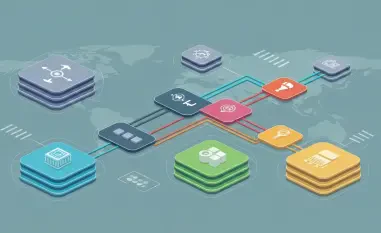Imagine a workplace where employees, eager to boost productivity, turn to powerful artificial intelligence tools without oversight, unknowingly exposing sensitive data and creating vulnerabilities that could cripple their organization. This scenario is becoming alarmingly common as shadow AI—unauthorized and unmanaged use of AI tools, particularly generative AI (GenAI)—spreads across industries. Recent insights from industry analysts reveal a startling prediction: by 2030, over 40% of global organizations could face security incidents due to such practices. The rapid adoption of GenAI offers immense potential for innovation, but without proper governance, it poses significant risks to data security, compliance, and operational stability. As companies race to integrate AI into their workflows, the hidden dangers of unchecked usage are coming into sharp focus, demanding urgent attention from leaders and IT professionals alike. This growing challenge underscores the need to balance technological advancement with robust risk management strategies.
Navigating the Hidden Dangers of Unauthorized AI
The security implications of shadow AI are profound and far-reaching, with many organizations already grappling with the consequences of employees using public GenAI platforms without authorization. Surveys of cybersecurity leaders indicate that 69% either have evidence of or strongly suspect their workforce is engaging with such tools, often leading to critical issues like data exposure and intellectual property loss. High-profile cases, such as a major tech company banning GenAI after sensitive information was shared on public platforms, highlight the tangible risks. Beyond immediate breaches, the lack of visibility into these tools complicates monitoring and compliance efforts, leaving firms vulnerable to regulatory penalties and reputational damage. To counter this, experts advocate for enterprise-wide policies on AI usage, coupled with regular audits to detect unauthorized activity. Integrating GenAI risk assessments into software-as-a-service evaluations is also recommended to ensure a comprehensive defense against the unseen threats lurking in the shadows of innovation.
The operational and financial burdens of even sanctioned GenAI projects add another layer of complexity to this issue. Projections suggest that by 2030, half of all enterprises will encounter delayed AI upgrades or escalating maintenance costs due to poorly managed implementations. The technical debt accumulated from maintaining or replacing AI-generated assets can erode the expected return on investment, while ecosystem lock-in with specific vendors risks long-term dependency. Perhaps most concerning is the potential erosion of human skills and institutional knowledge if reliance on AI overshadows critical thinking and expertise. A balanced approach, prioritizing open standards and modular architectures, is essential to mitigate these challenges. By preserving human judgment alongside AI capabilities, organizations can avoid the pitfalls of over-dependence and ensure sustainable growth in an increasingly AI-driven landscape.













